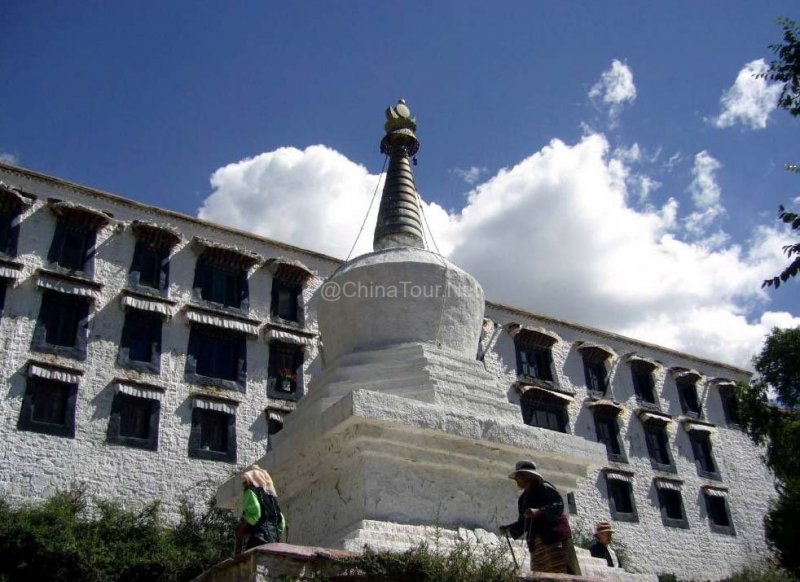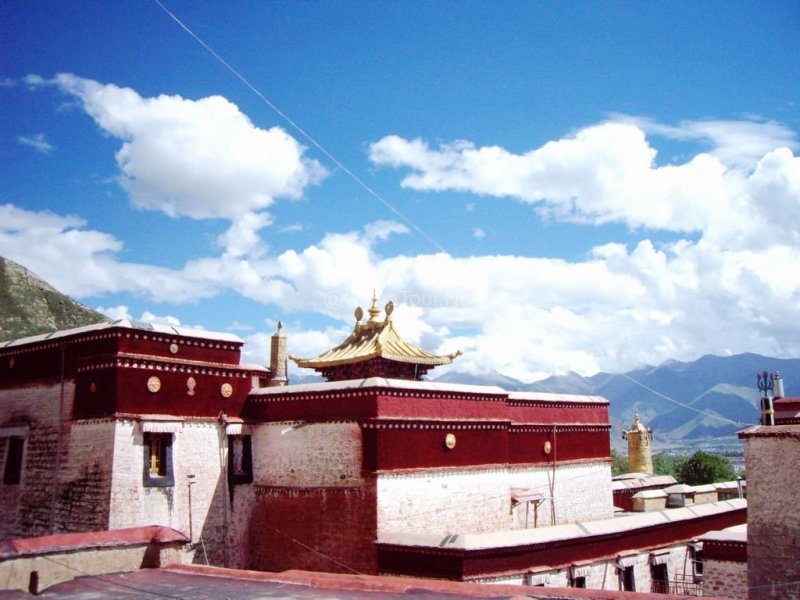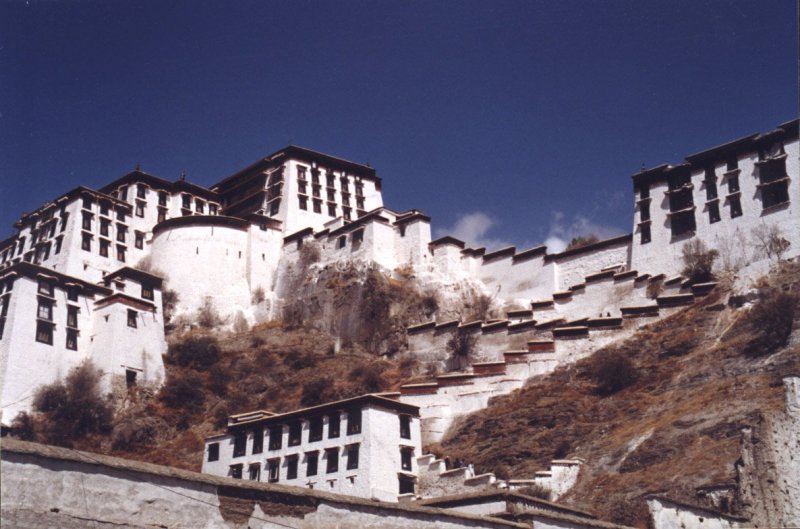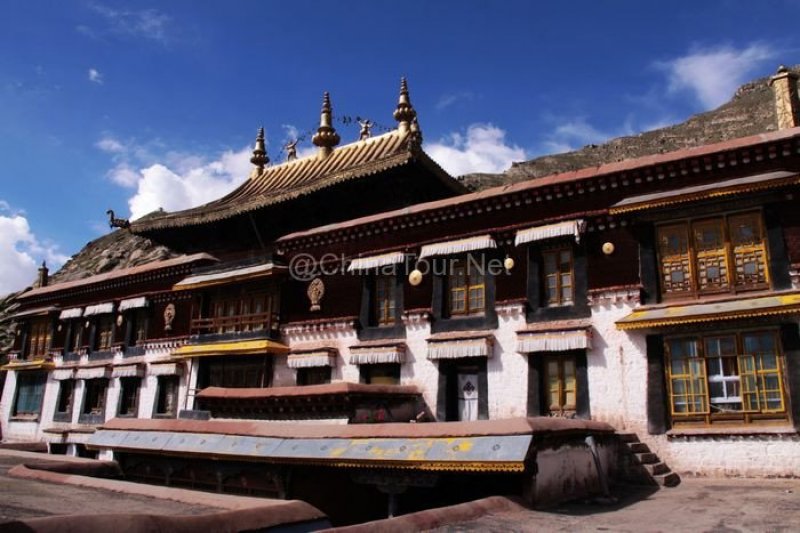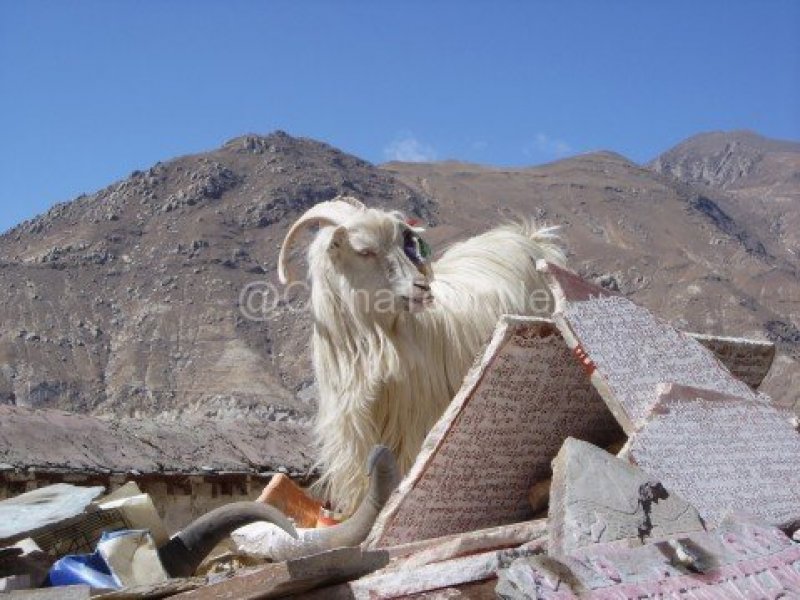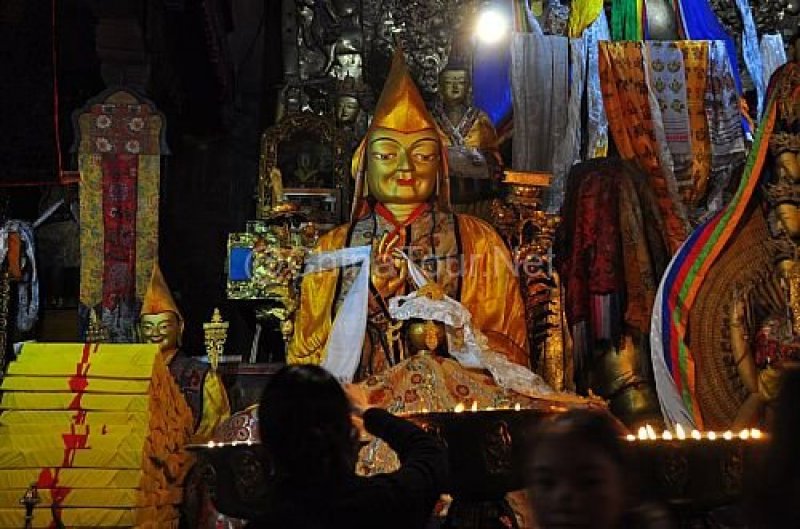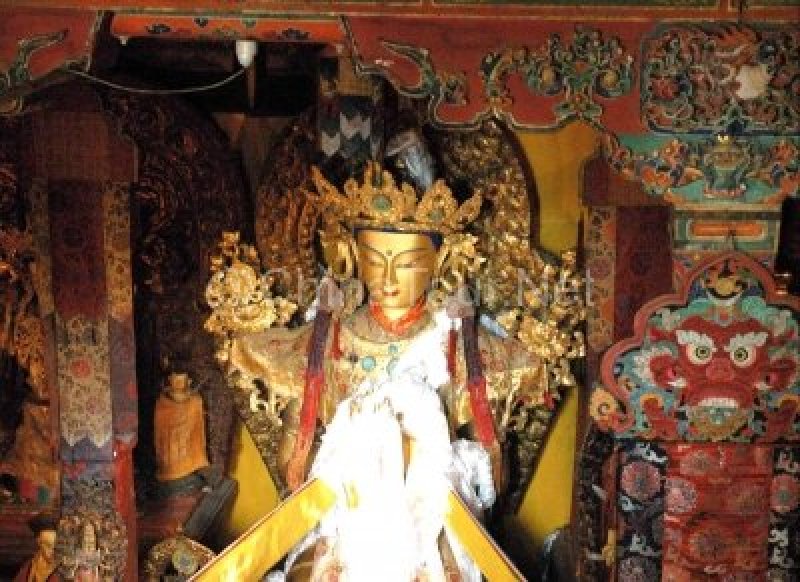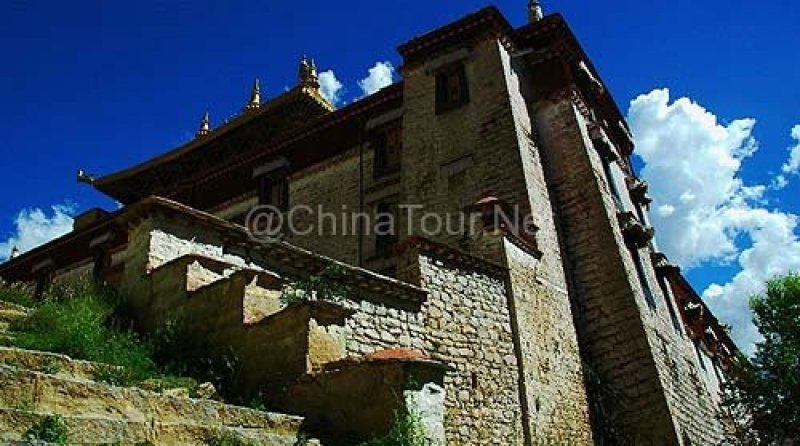Located at the foot of a mountain in the northern outskirts of Lhasa, Sera Monastery was built in 1419 by Jamchen Choje, one of the eight disciples of Tsongkhapa, the founder of Gelugpa Sect, covering an area of 114,964 square metres. Sera means “wild rose garden” in Tibetan, since opulent wild rose woods once grew around the monastery. The structure is imposing, picturesque in disorder, and splendid in green and gold. It is a typical Tibetan architecture. Sera Monastery, together with Ganden Monastery and Drepung Monastery in Lhasa, is reputed as the Three Great University Monasteries of Tibet. The monastery consists of three ‘Zhacangs’ or colleges. Besides the college buildings are the ‘Tsokchen Hall’ or Great Assembly Hall and the ‘Kamcun’ or dormitory along with other buildings of lesser importance. Sera monastery is well-known for its almost daily ‘monk debates’ which are popular with visitors. In the afternoon, the monks gather in a central courtyard and debate points of Buddhist learning. You don’t need to understand Tibetan or the finer points of Buddhist theology to enjoy the spectacle.
A legend says that Tsong Khapa and his two disciples traveled in the area, spreading Buddhism. One day, they heard a horse whinnying underground when they were taking a walk in the rose woods. They dug up a statue of Hynagriva (a horse-headed demon-god) and Tsong Khapa began construction of a monastery to enshrine Hynagriva.
However, the truth is that in 1414, Jamchen Chojey (or Sakya Yeshe), one of Tsong Khapa’s disciples, visited Emperor Chengzu of the Ming Dynasty (1368-1644) as Tsong Khapa’s emissary. The Emperor Chengzu granted him a title of Dharma King of Great Mercy, a large number of sutras, a set of sandalwood arhats (statues of enlightened Buddhists), frocks, silks, gold and silver, and so on. In order to preserve them, Tsong Khapa instructed Jamchen Chojey to build a monastery to house the treasures. The Sera Monastery was completed in 1419.
Sera is designed around a main assembly hall, or Coqen in Tibetan, which is the grandest hall of Sera, occupying a floor space of 1,000 square meters. The four-story hall has four chapels in which arhats, Manjushri, Tsong Khapa, and Chenrezi are enshrined. Later, a huge Maitreya was enshrined in the hall during the reign of the 7th Dalai Lama. The valuable Buddhist sutras that Jamchen Chojey brought back from the Ming Dynasty of Central China are kept in a sutra pigeonhole adjacent to the hall.
Sera houses three Zhacangs, the colleges for studying the sutras. The first, Sera Me Zhacang, was built in 1419. It was later destroyed by a lightening strike, but restored in 1761. Its Chanting Hall is remarkable. Sera Me is prestigious for its fine, undamaged murals.
Sera Je Zhacang was first founded in 1435 and expanded by a Mongol king in 17th century. The building has five stories, covering a space of a thousand square meters. Its main hall contains 11 stupas of the Ganden and Ratreng Tripas (respectively the heads of their respective sects). The original Hynagriva statue is enshrined in the building’s Hynagriva Chapel.
Ngagpa Zhacang was established in 1559. The smallest of the three Zhacangs, it houses its founder Jamchen Chojey’s statue in its chanting hall. The set of sandalwood arhats granted to the monastery is housed in it. For the sake of perfect preservation, they are encased in the bellies of a set of clay arhats, which have been authenticated as the original ones.
Sera’s collection of murals is maintained in perfect, original condition. Its statues of Maitreya, Bodhisattvas, and arhats are very noteworthy. Scriptures written in gold powder, scroll paintings, a tapestry portrait of Jamchen Chojey, and thangkas (three-dimensional artwork) can be seen throughout Sera.
Since ancient times, Living Buddhas and monks have taught the Buddhist doctrines in the area surrounding Sera. Dotted with willow trees, it is also home to many small monasteries and nunneries, including the Purbujor and Zhachi Holy Maid monasteries, Myiqoinre Nunnery, the Kardoreqoi mediation area, and the Balungreqoi (If you know what this is, explain. I saw only one entry in my website search and it didn’t show anything) to the east and south; Barku, Gungbasa, Pobengang, Zhaxiqoilin, and Qoisang monasteries as well as the Garil Nunnery to the west; and Zhukangreqoi and Seraqoiding monasteries to the rear.

